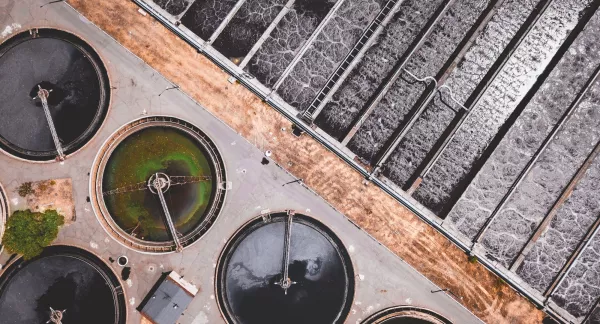California State Water Board Grant
Continuing a long-standing partnership, the the California State Water Resources Control Board (SWB) contracted with WRF in 2018 to fund research gaps in the non-potable and potable reuse arena. The funding from SWB is broken into the following two grants.

Grant 1
The first grant ($1.4M, D1705002) funded 5 projects which were recommended by the SWB Expert Panel in their report on the feasibility of developing criteria for Direct Potable Reuse (DPR). The research findings will be used to develop regulations for DPR, driven by CA legislation SB 574 (2017), which established a deadline of 2023.
The following projects were funded under the first part of this grant:
- Tools to Evaluate Quantitative Microbial Risk and Plant Performance/Reliability (4951)
- Pathogen Monitoring in Untreated Wastewater (4989)
- Feasibility of Collecting Pathogens in Wastewater During Outbreaks (4990)
- Defining Potential Chemical Peaks and Management Options (4991)
- Evaluating Analytical Methods for Detecting Unknown Chemicals in Recycled Water (4992)
Two webcasts were held in 2021 to showcase the research outcomes of this first grant:
Grant 2
The second grant (D1705003) used the WRF Research Priority Program process to award $3.1M for potable and non-potable reuse research. The work was conducted in 3 phases, utilizing the Water Reuse Advisory Committee to develop project concepts each year, which were then approved by SWB.
The following projects were funded under the second part of this grant:
- Evaluation of CEC Removal by Ozone/BAF Treatment in Potable Reuse Applications (4832)
- Understanding the Impacts of Wastewater Treatment Performance on Advanced Water Treatment Processes and Finished Water Quality (4833)
- Considerations and Blending Strategies for Drinking Water System Integration with Alternative Water Supplies (4953)
- Integration of High-Frequency Performance Data for Microbial and Chemical Compounds Control in Potable Reuse Treatment Systems (4954)
- Indicator Viruses to Confirm Performance of Advanced Physical Treatment (4955)
- State-of-the-Science Review: Evidence for Pathogen Removal in Managed Aquifer Recharge Systems (4957)
- New Techniques, Tools, and Validation Protocols for Achieving Log Removal Credit across NF and RO Membranes (4958)
- Evaluation of Tier 3 Validation Protocol for Membrane Bioreactors to Achieve Pathogen Credit for Potable Reuse (4959)
- An Enhanced Source Control Framework for Industrial Contaminants in Potable Reuse (4960)
- The Use of Next Generation Sequencing (NGS) Technologies and Metagenomics Approaches to Evaluate Water and Wastewater Quality Monitoring and Treatment Technologies (4961)
- Identifying the Amount of Wastewater That Is Available and Feasible to Recycle in California (4962)
- Developing a New Foundational Understanding of SAR – Soil Structure Interactions to Provide Management Options for Recycled Water Use in Agriculture (4963)
- Assessing the State of Knowledge and Impacts of Recycled Water Irrigation on Agricultural Crops (4964)
- Potential of Oilfield Produced Water for Irrigation in California (4993)
- Pathogen Removal Credits for Wastewater Reuse: Guidance for Study Plans and Reporting (5047)
- Integrating Real-Time Collection System Monitoring Approaches into Enhanced Source Control Programs for Potable Reuse (5048)
- Public Health Benefits and Challenges for Blending of Advanced Treated Water with Raw Water Upstream of a Surface Water Treatment Plant in DPR (5049)
- UV/Chlorine AOP in Potable Reuse: Assessment of Applicability, Operational Issues, and Potential Byproducts (5050)
- Geochemical Considerations for Managed Aquifer Recharge Implementation in Potable Reuse (5051)
- Standardizing Methods with QA/QC Standards for Investigating the Occurrence and Removal of Antibiotic Resistant Bacteria/Antibiotic Resistance Genes (ARB/ARGs) in Surface Water, Wastewater, and Recycled Water (5052)
Filling Information Gaps to Develop DPR Regulations
Public water supplies in California come from groundwater and surface water in a wide range of locations and with characteristics that reflect the geographical diversity of the state. Factors such as population growth and extended droughts are stressing these supplies. Over the next few decades, supplies are likely to diminish.